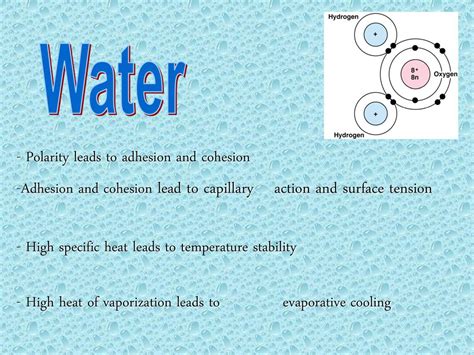The realm of chemistry unveils a fascinating relationship between molecular polarity and the heat of vaporization. This phenomenon, rooted in intermolecular interactions, holds profound implications for diverse scientific fields and applications.

Intermolecular Forces and Polarity
Molecular polarity refers to the uneven distribution of electrical charges within a molecule. This asymmetry arises from electronegativity differences between atoms, creating either a dipole moment or an ionic bond. Polar molecules possess a partial positive and negative charge at their opposing ends, influencing their intermolecular interactions.
Intermolecular forces, such as van der Waals forces and hydrogen bonding, govern the relative strength of interactions between molecules. Polar molecules exhibit stronger intermolecular forces due to their electrostatic attraction.
Impact on Heat of Vaporization
The intermolecular forces between molecules play a pivotal role in determining their heat of vaporization, which is the energy required to convert a liquid into a gas at a constant temperature. Polar molecules require more energy to overcome their strong intermolecular forces, leading to a higher heat of vaporization.
For instance, methanol (a polar molecule) has a heat of vaporization of 35 kJ/mol, while non-polar hexane has a heat of vaporization of 30 kJ/mol. The stronger intermolecular forces between methanol molecules hinder their escape from the liquid phase, necessitating more energy to vaporize.
Applications in Various Fields
The polarity-heat of vaporization connection finds widespread application across multiple disciplines.
Chemical Engineering
In chemical engineering, understanding the heat of vaporization is crucial for designing distillation columns, which separate liquids based on their boiling points. Polarity considerations in solvent selection enhance separation efficiency and reduce energy consumption.
Pharmaceutical Industry
In the pharmaceutical industry, the heat of vaporization influences drug delivery systems. Polar drugs require more energy to vaporize, enabling sustained release over a longer duration. This property is utilized in transdermal patches and inhalation therapies.
Material Science
In material science, the polarity-heat of vaporization relationship aids in understanding and manipulating surface properties. Polar materials exhibit enhanced adhesion due to their stronger intermolecular forces, making them suitable for coatings and adhesives.
Advancing Applications through “Polarity Engineering”
The concept of “polarity engineering” emerged as a novel approach to design and modify materials with desired properties. By manipulating the polarity of a molecule or material, scientists can influence its heat of vaporization and intermolecular interactions.
Novel Drug Delivery Systems
For example, researchers have developed polar nanocarriers for targeted drug delivery. These nanocarriers exhibit stronger adhesion to biological membranes due to their polarity, enhancing drug delivery efficiency to specific cells.
Smart Coatings and Adhesives
Polarity engineering has facilitated the development of smart coatings that respond to external stimuli, such as temperature or light. Polar coatings exhibit enhanced self-healing properties and can be used in protective and anti-fouling applications.
Quantifying Polarity and Heat of Vaporization
Various techniques are employed to quantify molecular polarity and heat of vaporization.
Measuring Polarity
- Dipole Moment: The dipole moment measures the separation of positive and negative charges within a molecule, providing a quantitative assessment of polarity.
- Polarity Index: The polarity index is a scale that classifies molecules based on their polarity, with values ranging from 0 (non-polar) to 1 (highly polar).
Measuring Heat of Vaporization
- Calorimetry: Calorimetry involves measuring the heat released or absorbed during a phase transition, such as vaporization.
- Thermogravimetric Analysis: This technique measures the mass change of a sample during heating, providing data on the heat of vaporization.
Conclusion
The polarity-heat of vaporization connection is a fundamental aspect of molecular interactions, with profound implications for various scientific disciplines and applications. By understanding and manipulating this relationship, scientists and engineers can design and develop advanced materials, optimize industrial processes, and enhance drug delivery systems. The concept of polarity engineering holds immense potential for unlocking innovative solutions in diverse fields, driving progress and improving human life.
